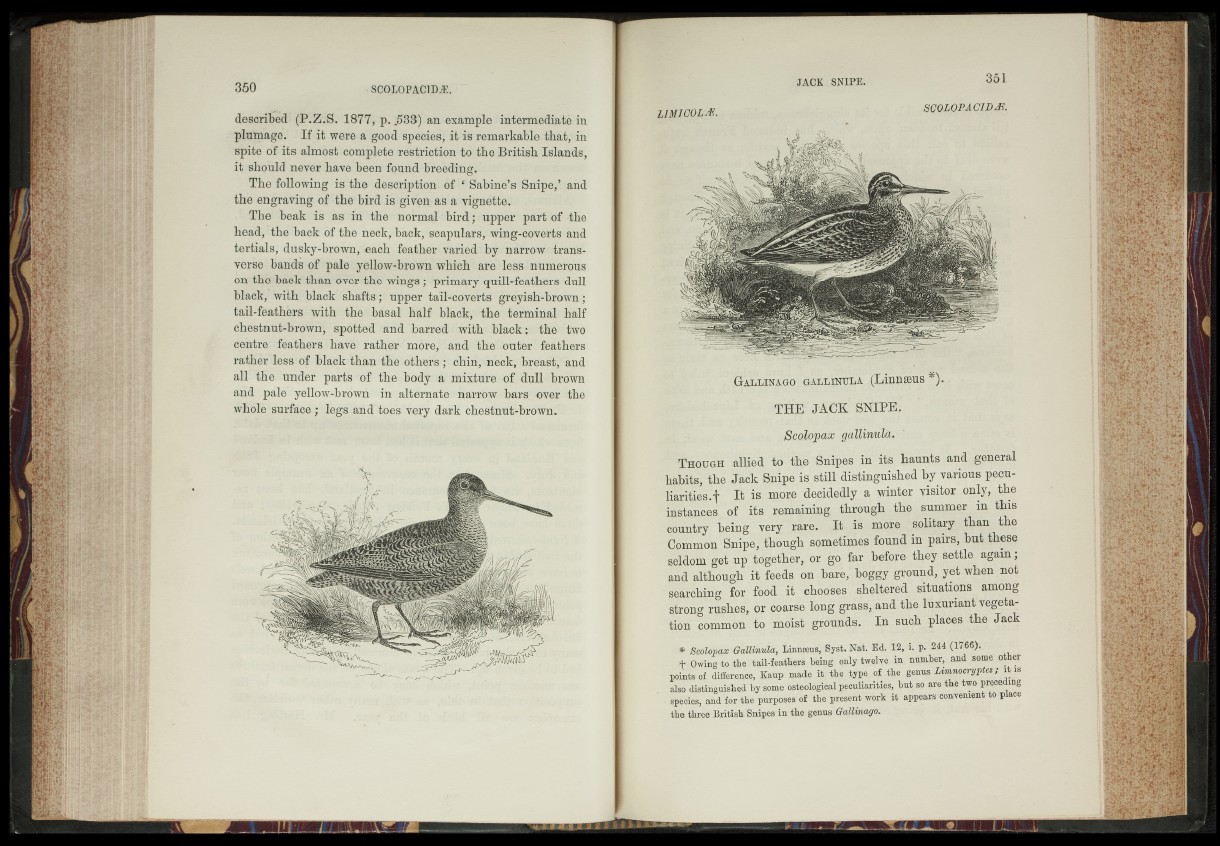
descried! 1877, p. .538) an example intermediate in
plumage. If it were a good species* it is remarkable that; in
"spite of its almost complete restriction to the British Islands,
fiishouid never have been found breeding.
The following is the description, of ‘ Sabine’s Snipe,’ and
the engraving of the bird is given as a vignette.
The beak is as in the normal: bird;» upper part of the
head, the back of the neck, baek,> scapulars, wing-coverts and
tertials, dusky-brown, .each feather varied by narrow transverse
bands of pale yellow-brown which are less numerous
on the back than over the wings; -.primary quill-feathers dull
black, with black shafts ; upper tail-coverts greyish-brown;
tail-feathers with the ' basal half black, the jterminal half
chestnut-brown, spotted and barred . with blackthe^two
ceotre- feathers have rather more, and the outer feathers
rather less of black than the others; chin, neck, breast, and
all the under parts of the body a mixture of.dull brown
and pale yellow-brown in alternate ’harrow bars over the
whole surface ; legs and' toes very dark chestnut-brown.
L i m m ^ SCQLQBA CIDJ3.
Gallinago ' GAH^pil (Linnseus *).;
THE' JACK SHIPE;
, „ Scoiofttix gallinulfyi
®Though ' allied to ' the Sniped in its haunts, and. general
habits, the Jack Snipe is.still distinguishedhy various peculiarities.!
‘ A Is more", decidedly a winter visitor only, the
inltancesVof it's remaining through .the summer in this
country being, very " rare. iWis more ’ solitary than the
Common Snipe, though sometimes found in pairs, but,these
seldom get up’together, or .go far before they settle, again;
and although it feels^ on'-Imre/ boggy ground‘, yet when not
searching for food it chooses, sheltered, situations among
strong rushes, or coarse long grass, and the luxuriant yeget&-
tion^foSnon^ to moist grounds. In such, places the Jack
If* lopdlt^Gnllwiuia,- Linnams, Syst. Nat. Ed. 12, i. p. 2441(1766-)., -
- 1 7 - 0 .wiiig to tie tail-feathers being only twelve in number, and some other
points of difference, Kaup made it, jjjp«s of the genus Ltmmcryptesj i t is
also distinguished by some ostpological peculiarities, but. so are the two preceding
species, andfor -the purposes of the present'wbrk it appears-convenient to place
the three British, Snipes in the genus'GqlUnago.